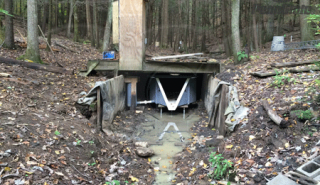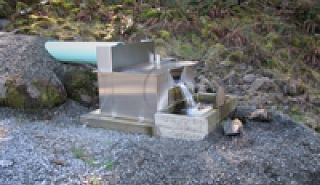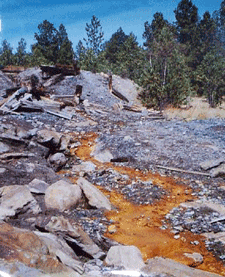 Turning off the pumps is one of the last things that happen when a mine is closed. Slowly many of the open spaces of the mine begin to fill up with water. Rain starts to percolate thought the roof and walls and ground water, previously held at bay by the pumps begins to seep back in.
Turning off the pumps is one of the last things that happen when a mine is closed. Slowly many of the open spaces of the mine begin to fill up with water. Rain starts to percolate thought the roof and walls and ground water, previously held at bay by the pumps begins to seep back in.
Historically, mines were often abandoned without proper (if any) cleanup. This lack of remediation and cleanup has meant that as water rises in the mine, pollutants, sediment, and debris can all enter what can become a flow of water out of the mine. The potentially toxic brew of chemicals and pollutants can greatly impact water quality if it is allowed to enter surface and ground waters if left unmonitored and untreated.
Flow monitoring is an integral element of any cleanup, remediation, or monitoring program. In measuring mine waters, the flow streams may contain high quantities of heavy metals, suspended solids, and low pH – similar to those experienced when monitoring landfill leachates.
For site where regular maintenance and inspection can be readily performed, weirs may work well. For sites that are more remotely monitored, the self-cleaning nature of flumes makes them the preferred choice.
Site Location
For smaller mines, monitoring typically takes place in or near the mine portal as rotting support timbers and cave-ins make entering many abandoned mines hazardous. Depending upon the site conditions and anticipated flow rates; both weirs and flumes may work well.
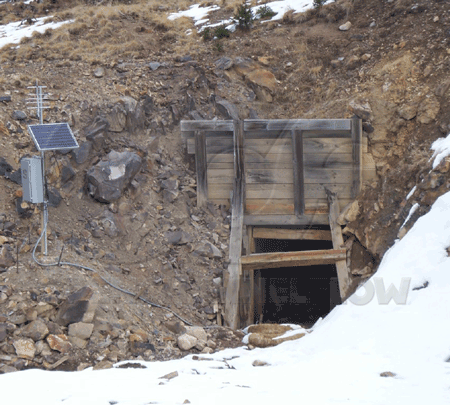
Larger mines pose a different challenge as the scale of the mine may require in-mine monitoring at one or more sites throughout the excavation. The increased flows of larger mines generally mean than flumes are the preferred choice as forming the requisite weir pool and the associated head loss can be difficult when applying weirs.
The Use of Flumes
H Flumes work well in mine applications as their range of flows is large and their flat floors readily pass large amounts of sediment without clogging. Even when provided with integral approach section, sediments do not impact H-flumes as much as many flumes and all weirs. At low flows when sediments tend to drop out in the approach section, water channelizes through any accumulated sediments. As the flow rises, these sediments ultimately push through the flume.
Similarly, flat-bottomed Cutthroat and Trapezoidal flumes work well where sediment loads are high. In addition, the low flow ability of the Trapezoidal flume make it attractive for applications where the flows are not anticipated to be large, but also where occasional surges may occur.
Parshall flumes, both in their standard and shortened Montana versions, work well at passing sediments and where the required change in elevation is available.
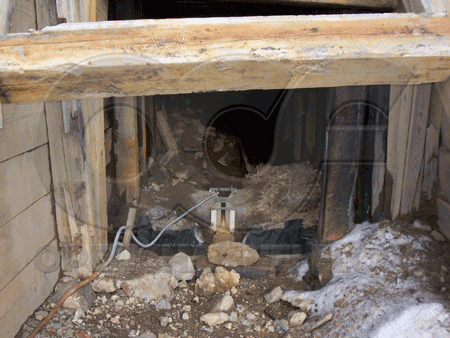
Neither Palmer-Bowlus or RBC flumes are recommended (or commonly found) in mine water applications. Similar to weirs, the throat ramp of these flumes results in standing water upstream when no flow is present - causing sediments to drop out. Under flow condtions some of these accumulated sediments may wash through the flume, but not all do and over time this will inevitably cause maintenance issues - negating one of the key advantages in using a flume on mine waters.
The Use of Weirs
Wolkersdorfer indicates that sharp-crested, thin-plate weirs are the predominate flow measurement device for mine water applications.
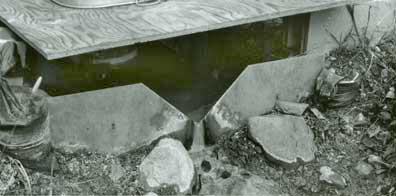
Their cost and simplicity certainly make them attractive, although the need for maintenance of the weir pool, difficulty of calibration, and the tendency of the weir crest to accumulate debris all should be considered. When view in their entirety it is more than a little surprising that weirs are as prevalent as Wolkersdorfer indicates.
With any weir installation is important to routinely inspect the weir pool for debris and the weir crest for damage, scaling, or growth.
Images: South Dakota Department of Environment and Natural Resources, U.S. Department of Agriculture - Forest Service - Technology and Development Program
Source: Wolkersdorfer, C., Water Management at Abandoned Flooded Underground Mines: Fundamentals, Tracer Tests, Modeling, Water Treatment, March 4, 2008.


